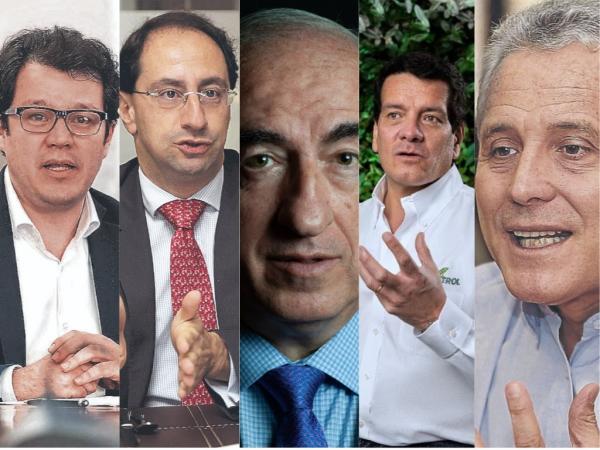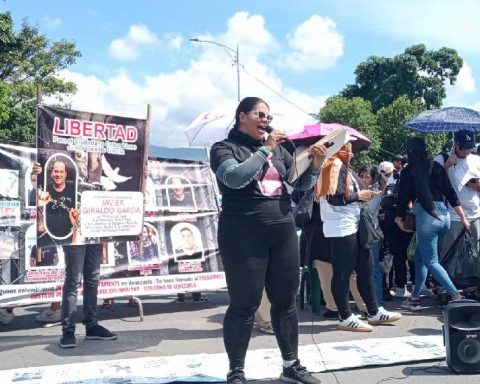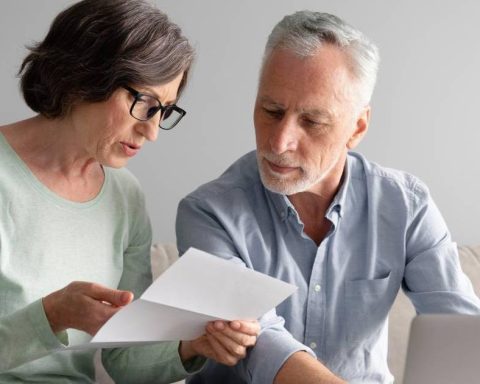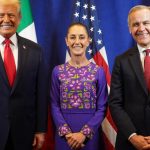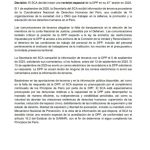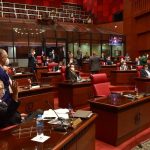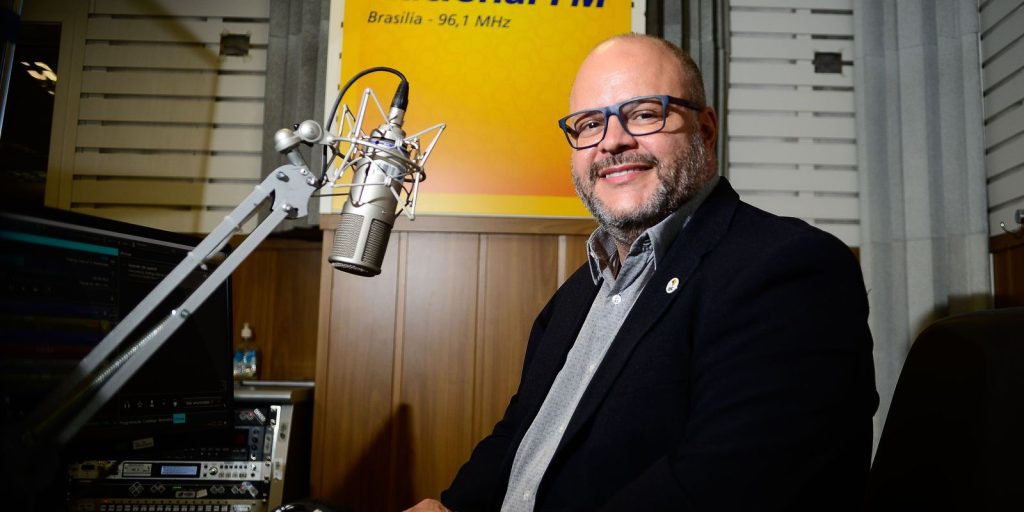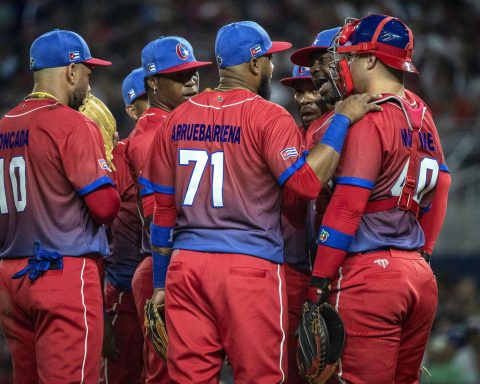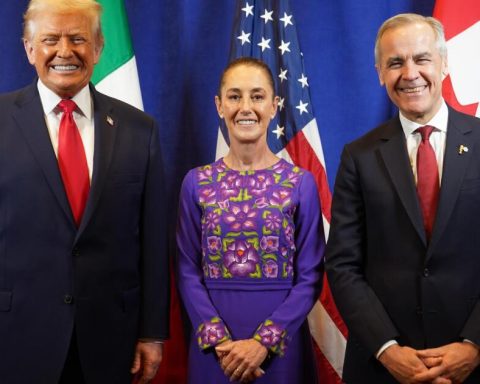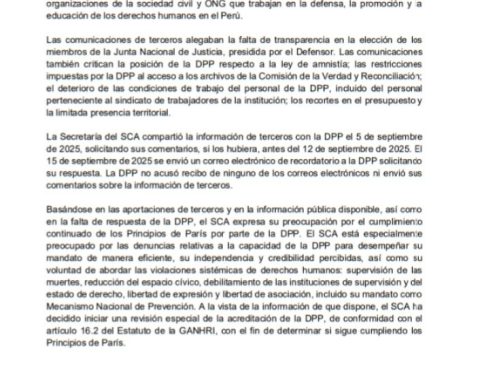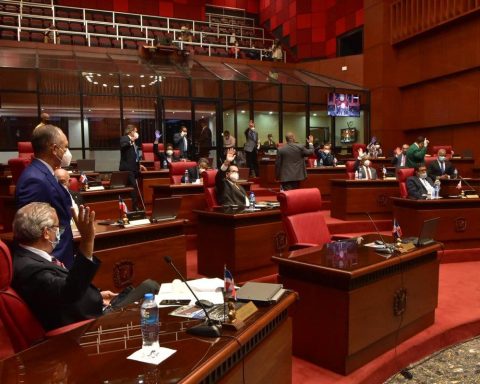The rebound of the economy after the blow it suffered due to the crisis that unleashed the covid-19 becomes the main achievement that Colombia reaches, when you are still trying to put the pandemic behind you.
(The challenges that the Colombian economy must face in its reactivation).
While the GDP of the past year registered a drop of 6.8%, the efforts made by all the actors of the economy made it possible, According to the forecasts, that Colombia not only goes to recover everything lost, but that the size of its production will be, a year later, greater than that presented in 2019.
(Return to the offices does not come alone).
Everyone has done their part along this path, but some aspects have been key: from vaccination, to the increase in household consumption, to the relevance of commerce, the push from industry or the endurance of the last to open.
1
Victor Muñoz, director of Dapre
The main factor that drove the reactivation of the national economy was undoubtedly the vaccination of Colombia. The advancement and coverage of a plan, which is still under development, has been the main support for the reopening and return to the reality of the post-pandemic.
At the head of the project from the Government there is a whole team that represents in Victor Muñoz, the director of the National Planning Department, Dapre, who has also contributed to the management of the procurement contracts with each of the pharmaceutical companies, the logistics development that It requires the application of a dose and in addition to monitoring the fulfillment of both deliveries, donations and their application, including the contribution of the private company in the process.
Vaccination has also boosted the development of the economy and has had an effect not only in the face-to-face environment but also in the digitization and access to both labor tools for a part of the population, government controls and also the creation of access to applications such as Coronapp , the Mi Vacuna website and now the effort required by the digital certificate, to facilitate the processes.
Private file
2
Consumers activated demand
Month by month in 2021, Colombians intensified their willingness to spend, despite the obstacles generated by high unemployment and inflation.
As sanitary restrictions have been lifted, consumers have regained confidence – as Fedesarrollo has shown. People have returned to spaces hit by the pandemic such as restaurants, bars, shopping centers, cinemas and gyms, which has made the economy more dynamic.
Recently, Camilo Herrera, founder of Raddar, explained that in the share of GDP in the third quarter of 2021, the spending of Colombian families “reaches 72.5%, a level never reached, which means that households are saving the economic dynamics but leaving several questions ”, questioning, for example, the lack of savings.
For Raddar, part of that increased consumption comes from various sources. He cites the credits, the largest remittances and the demand of Venezuelan migrants.
In his analyzes, he has also pointed out how this higher spending has been typical of households that are in the highest socioeconomic levels.

Weather archive
3
José Manuel Restrepo, Minister of Finance.
He is the head of the government’s economic team, which is why, in the midst of a heated scene of social demonstrations, he led the call to find a consensual solution on fiscal emergencies and attend to the pockets of Colombians. Thus, he spearheaded the tax reform proposal that balanced the finances of the State and gave a second life to economic aid to lower-income citizens.
Thus, the aforementioned document was also on its way to carry out activities such as the VAT-free day that boosted consumption, a great milestone in the economic reactivation of the country.
But to achieve the latter, the Treasury portfolio together with other agencies, such as the Ministry of Commerce and the Ministry of Health, gradually graduated the reopening of the various sectors that, thanks to an accelerated vaccination process, were encouraging a pace of work at pre-pandemic levels.
With challenges still to be overcome, the country’s economy is taking off and everything indicates that this year it will exceed the projected growth targets of over 9%.

Caros Ortega. Weather archive
4
Carlos Mario Giraldo, president of Grupo Éxito
Trade in goods and services has recovered in the year that is ending. The figures as of September, the latest available from the Dane, speak of the fact that in the accumulated of the year sales have had a variation of 20.4%.
This figure could increase, if one takes into account that expectations are high for the last quarter, with the holiday season, traditionally dynamic for sales.
Representing the sector, Grupo Éxito, the largest retail company, has seen a rise in the business environment and consumer confidence, said its president, Carlos Mario Giraldo. It is also true that the improvement has been replicated among medium and small merchants in the different regions of the country.
The three days without VAT that exceeded sales expectations, in person and online, as well as the recovery in the sale of clothing and footwear have been other signs of the favorable moment for the activity. This, even in the midst of the threats posed by the difficulties of importing raw materials and products due to the so-called container crisis.

5
The expansion policy
Leonardo Villar Gomez
With the onset of the pandemic in Colombia, in mid-March 2020, the Banco de la República adopted countercyclical measures to stimulate the economy, which was known to have a contraction due to quarantines and confinements to try to control the expansion of the pandemic. Seven monthly drops in its indicative rate to historical lows of 1.75%, as did the vast majority of central banks, sought to generate an expansionary monetary policy so that it could be transmitted and lower the cost of loans to families and companies . In September, a year after the last rate cut, when a reaction from the economy was already being observed but also an increase in inflation, the Issuer began to normalize monetary policy and raise the cost of its main intervention mechanism, although gradually, up to a level where it will be neutral in 2022, according to the entity.

Claudia Rubio / CEET
6
Matias Laks, Rappi’s country manager
One of those representatives of the digital transformation in the country is the Rappi platform, not only for being the first unicorn in Colombia, but also for becoming an inspiring symbol for many companies on their way to digitization.
During the health emergency, this startup, led by Matias Laks, stood out for helping small businesses to connect with their consumers, and also consolidated as a strategic ally in the reactivation process.
Today this application continues working to offer its users an entire ecosystem that has all the tools. Thus, from a single application, consumers can ask for an address, buy groceries, pay bills and even access a credit card.
It is expected that the application will continue to consolidate its business model and next year it will enter fully into banking.

7
Mobility, events and cafes resurface
The return to the offices and the hybrid work model has marked several sectors of the economy such as: mobility, technological services and even the famous ‘currents’.
The meeting points between workers have been revived like coffee shops and even casinos. Eric Pell, director of customer development at Makro Colombia, pointed out that sales of products such as coffee, tea, meats such as chicken and pork have been reactivated, thanks to the return of the professional customer.
Transport platforms such as Beat affirmed that trips to office areas in Bogotá have increased by 45% compared to 2020. However, it does not stop there. The technology sector has received requests for renewal of software, as well as equipment in companies. Lastly, corporate events are also being reactivated.

Weather archive
8
Felipe Bayón, president, Ecopetrol Group
International oil prices have not only helped the country to balance its finances to a large extent, but also boosted the hydrocarbon operation in the territory, which incidentally means an increase in crude production.
And by keeping the price of a barrel above US $ 80, companies like Ecopetrol have allowed their operations to be more viable. “In addition to increasing exploration tasks, improved recovery processes and the production of heavy crude have been activated,” said Felipe Bayón, president of the oil company.
The good price per barrel also allowed the oil companies to generate more cash as a result of their sales, which would allow consolidating the optimizations made in operating costs in a field.

Private file
9
Jorge Mario Velázquez, from Grupo Argos
Faced with the adversities imposed overnight by a new invisible enemy such as COVID-19, companies related to industry and the manufacturing sector have put resilience into practice to exit the process victoriously and reinvented.
An example of this is Grupo Argos, the conglomerate of companies that, through its different lines of business, such as cement or road concessions, contributes to the development and economic reactivation of the country with the implementation of projects and the planning and investment of many others.
With a cumulative $ 11.4 trillion in accumulated operating income at the end of the third quarter, the conglomerate explained that the good economic moment that the country is going through encourages them to grow in their verticals of construction, energy and road and air concessions.

10
‘Encanto’, animated film based on Colombia
The premiere of ‘Encanto’, a film based in Colombia, produced by Disney, meant a boost in the reactivation of cinema in the country. In fact, Munir Falah, president of Cine Colombia, stated that on Saturday, November 27, two days after the film’s arrival in the country, 291,000 people saw the feature film in its cinemas.
This wave of attendees was also confirmed by Cinemark. Its president, Pablo Umaña, pointed out that in 5 days, the film attracted 200 thousand spectators. Entrepreneurs in this industry foresee a good closing of the year, driven by this feature film. In a week, production increased ticket sales at Cinépolis by 270%, as stated by María Ortega, the company’s director of operations for the Andean region. On the other hand, ‘Encanto’ has prompted brands such as Vélez and Totto to release products inspired by the film. In addition to serving as a tourist strategy.

Private file
